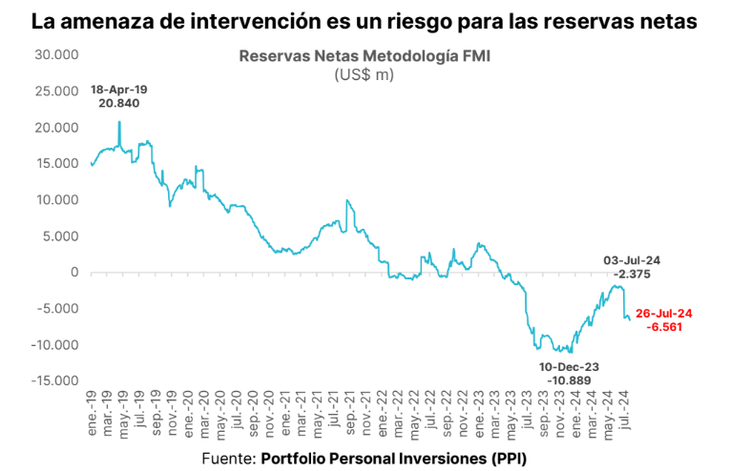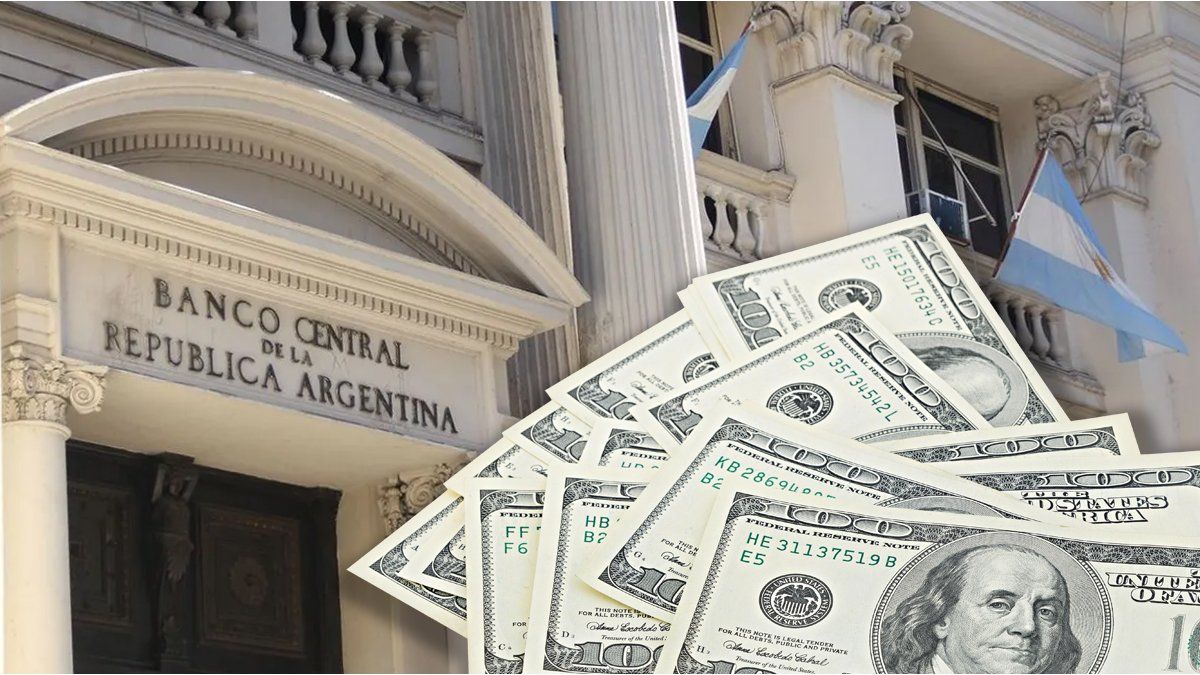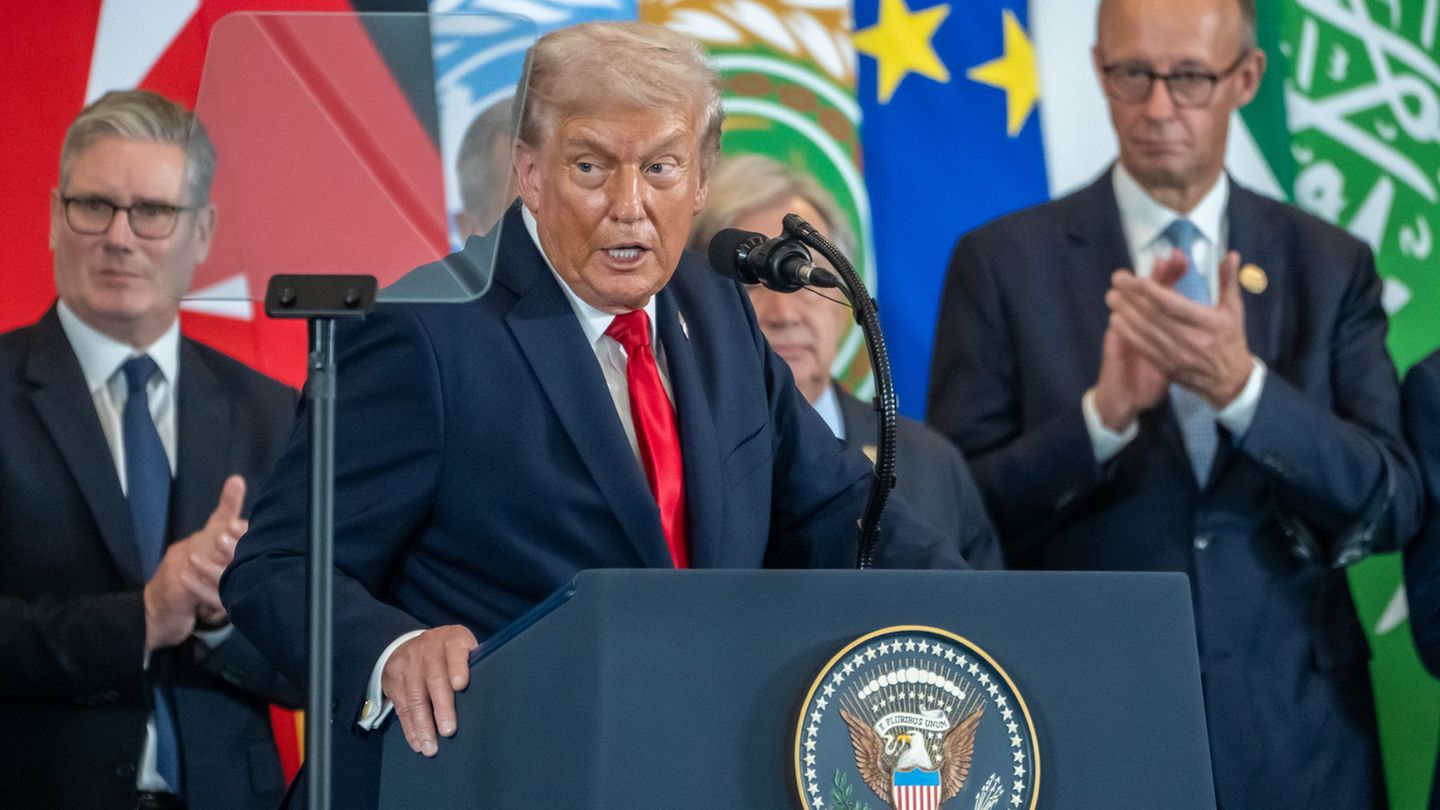The Central Bank will begin paying the BOPREAL due payments this Wednesdaythe dollar bond issued by the Santiago Bausili administration to channel the commercial debt of importers and which was later extended to companies with unpaid balances of profits and dividends. Thus, a series of monthly maturities of this instrument will begin, In the remainder of the year, it will involve allocating between US$1.3 billion and US$1.45 billion of the reserves international, the front of greatest tension for the Government’s plans.
This Monday, The BCRA issued the formal notices confirming the payment which will take place on Wednesday. It is about US$167 millioncorresponding to the first capital amortization of Series 2 of the BOPREAL, which does not accrue interest. This series, the shortest of the three, will amortize in twelve monthly installments from now until June 2025 a total of US$2 billion, so that by the end of 2024 it will imply the payment of approximately US$1 billion.
To that Interest coupons from series 1 and 3 will be added in August, October and November (which pay a rate of 5% and 3%, respectively), which will stretch the amount to be settled during the second half to around US$1.45 billion. Although, as three of the subseries into which series 1 was divided can be used to cancel taxes, some sources estimate that the total amount to be settled by BOPREAL in the remainder of the year will be closer to US$1.3 billion. Netting out the use of part of the first series for payments to the AFIP, economist Salvador Vitelli, from Romano Group, estimated that By 2027, BOPREAL will demand around US$7.6 billion from the reserves.
A month full of deadlines
The BOPREAL due date this Wednesday will complete a month of July of heavy demand for the BCRA’s coffers in terms of foreign debt commitments. Between this instrument and the Treasury’s payments to bondholders for US$2,558 million, to the International Monetary Fund for US$645 million and to other organizations, they totaled more than US$3,810 million. But things don’t stop there: according to numbers from the Congressional Budget Office, On Thursday, August 1, the equivalent of US$779 million in interest with the IMF expirescorresponding to the multi-million dollar loan that Mauricio Macri took out in 2018.
The shortage of reserves and the large external debt commitments for the coming years The two are closely related. In order to access international markets (which have been closed for six years) and refinance future payments, the government needs them to be perceived as sustainable by financiers. The country risk, which remains firm above 1,550 basis points, seems to show the opposite. And the latest measures, detached from the prospects of currency accumulation, reinforce these concerns.
For now, according to Vitelli’s estimates, In 2025, approximately US$18 billion of foreign currency debt will mature; in 2026, US$18.7 billion; and in 2027, US$22.5 billion. Of this total, US$23.5 billion correspond to sovereign bonds.
image.png
Pressure on BCRA reserves
The truth is that the next payments from BOPREAL and the IMF coincide with the most critical moment for the current administration’s reserves. Now that we have entered the most seasonally unfavorable quarter of the year for the flow of foreign currency, this Monday the BCRA had a negative balance in the accumulated balance of its intervention in the official exchange market during July. In the first two days of this week, the Central Bank had to sell US$188 million and, With just one wheel left to close the month, net sales are at US$100 million.
The majority of analysts estimate that, as of today, Net reserves are negative by more than US$4 billionBut there are estimates that go further: For Personal Portfolio Investments (PPI), they are negative by US$6,561 millionAccording to the firm, the performance of the last few days would be explained by “private demand at record levels in the Milei era” which, in addition to seasonal factors, added access to the official dollar by companies and provinces to settle their debts. Added to this is the fact that, at this point, the magnitude of the monthly payment of imports is practically equal to that of the purchases from abroad actually made.
The truth is that Javier Milei and Santiago Bausili had already mentioned that, due to seasonality (once the coarse grain harvest is over), they expect that up to US$3 billion of reserves will be lost this quarter. But The latest measures add extra pressure to what was originally planned.
First, the intervention to contain the exchange rate gap will require the sale of around US$1.8 billion, since the BCRA confirmed that it will seek to sterilize through sales in the MEP and the CCL the $2.4 billion that were issued after April 30 to buy foreign currency. Second, the Advance purchase by the Government of US$1.5 billion to ensure bondholders will receive interest payments next January. And third, the easing of the exchange rate restrictions announced last week, which halved the period of access to the official dollar for payment of most imports.
image.png

“The BCRA is losing dollars due to the intervention in CCL/MEP to keep the exchange rate gap in check. According to our calculations, allocated an estimated US$253/US$261 million in ten rounds for the CCL to plummet from $1,425 prior to the intervention announcements to $1,316 at the close on Friday, compressing the gap from 53.7% to 41.3% in this period,” they warned from PPI. And they calculated an impact on net reserves of this measure that would take them “from an estimated -US$6,581 million to around -US$8,400 million, assuming the rest of the variables constant, which is an optimistic assumption given its performance in the official market.”
In this regard, PPI highlighted that “Having made access to the official market more flexible for more than 60% of imports, greater pressure was added between September and Novemberwhen there will be a flow of more than 100% of imports accessing (quotas from the previous scheme overlap with the new one)”.
To all this combo is added Another cause for concern: the fall in the international price of soybeanswhich has not found a bottom and is already at its lowest value in real terms since 2006, according to Vitelli’s calculations. On Wednesday, the ton in Chicago fell another 2.68% to US$377.44.
In this context, and with the increasingly remote possibility of the IMF approving a new program with additional debt in the short term, as Luis Caputo intends, the Government is betting on money laundering as the most immediate source of foreign currency. However, this does not alleviate the warnings about the reserves. In this regard, a recent report by the consulting firm Vectorial stated: “The fulfillment of external commitments, the lowering of inflation by anchoring the dollar and the normalization of the exchange rate regime are all objectives of this administration, but the market is still not convinced that there is all the necessary foreign currency to cover this variety of purposes and is beginning to bet on which of them it will have to give up.”
Source: Ambito
I am a 24-year-old writer and journalist who has been working in the news industry for the past two years. I write primarily about market news, so if you’re looking for insights into what’s going on in the stock market or economic indicators, you’ve come to the right place. I also dabble in writing articles on lifestyle trends and pop culture news.




